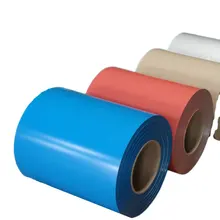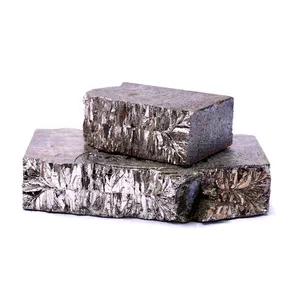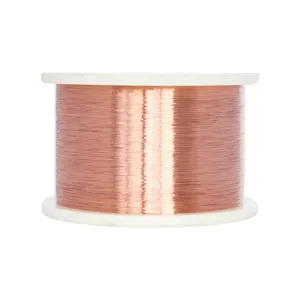Top categories

Wire Mesh

Stainless Steel

Alloy Steel

Non-ferrous Metal

Metals & Metal Products

Carbon Steel

Iron & Iron Products
About products and suppliers
Exploring Copper Ingot Price Trends
The trajectory of copper ingot prices is shaped by an array of determinants, such as global copper demand, raw material availability, production expenditures, and speculative trading. Copper ingots, the foundational material for myriad copper-based products like wires, pipes, and electrical cables, are produced by smelting copper ore and pouring it into form-giving molds.
Due to their superior thermal and electrical conductive properties, copper ingots are indispensable across various sectors. The electrical industry, in particular, depends on copper for fabricating wires and cables essential for electricity transmission. Copper's thermal conductive quality also renders it vital for producing heat exchangers and plumbing infrastructures.
Global supply and demand forces cause copper ingot prices to oscillate. For example, a rise in infrastructure projects can trigger an upswing in copper ingot demand, thereby influencing their market price. In contrast, a downturn in industrial output might lead to reduced demand and a consequent price decline. Firms engaged in copper ingot transactions keep a vigilant eye on these price movements to guide their buying and selling strategies.
Varieties of Copper Ingot Price Trends
Copper ingots are differentiated by their purity levels, shape, and whether they stem from recycled sources or primary production. Alibaba.com's inventory encompasses:
-
Pure Copper Ingots: Boasting 99.9% copper purity, these ingots are prized for their exceptional electrical conductivity and are commonly utilized in electrical wire production and as grounding conductors across various sectors.
-
Alloyed Copper Ingots: These ingots are a fusion of copper with elements such as tin, nickel, and silver to bolster strength, corrosion resistance, or targeted conductivity. They are preferred in scenarios demanding greater durability than that offered by pure copper.
-
Recycled Copper Ingots: Composed of reclaimed copper, these ingots represent an environmentally conscious choice gaining traction in sustainability-driven initiatives across diverse industries.
Each copper ingot type is tailored to specific project requirements. By discerning the distinctions among them, enterprises can pinpoint the most suitable variant for their applications.
Selecting Copper Ingot Price Trends
Choosing the appropriate copper ingot entails a thorough evaluation of several aspects. The intended use will predominantly dictate your selection; for instance, businesses focusing on electrical components would benefit from pure copper ingots for maximum conductivity. Conversely, those in the construction realm might favor alloyed copper ingots for their augmented strength and corrosion resistance.
It is also critical to account for the ingot's chemical makeup and physical attributes. Manufacturers crafting wires or tubes must grasp which elements can be amalgamated with pure copper to create specific alloys. Moreover, if your product must endure high temperatures or requires a certain pliability without sacrificing structural integrity, an ingot capable of withstanding such conditions is imperative.
Lastly, the ingot's form upon delivery should be considered. Some applications may necessitate additional processing, so it is essential that the ingot's form—whether rod, billet, or nugget—suits your operational requirements.
Understanding Copper Ingot Price Trends on Alibaba.com
For enterprises in search of dependable copper ingot sources, Alibaba.com emerges as a leading online marketplace, connecting a worldwide network of suppliers with a broad spectrum of products for any commercial need. With over twenty years of experience in B2B transactions across more than 190 countries, Alibaba.com has become a byword for trust and efficiency in the realm of international commerce.
Suppliers on Alibaba.com meet a wide range of industry needs, from construction to manufacturing and electronics, providing both pure and alloyed copper ingots tailored to specific performance criteria. The platform enhances the procurement experience with features like mobile access and support for multiple languages, alongside services for order management and delivery that optimize global business operations.
Alibaba.com's dedication to quality is epitomized by its Trade Assurance program, which secures payments until delivery confirmation, ensuring transactions are both protected and satisfactory. This commitment to quality assurance is a key reason why numerous businesses turn to Alibaba.com for sourcing wholesale copper ingots with assurance, accessing a marketplace attuned to their requirements and a platform engineered for their international success.
Frequently Asked Questions on Copper Ingot Price Trends
What is the primary use of copper ingots?
Copper ingots are chiefly employed in the electrical sector for crafting electrical wiring, as well as in various industrial uses such as plumbing, roofing, and the creation of alloyed metals.
How do the different grades of copper ingots affect industrial applications?
The grade of a copper ingot, like C110, C102, or C101, signifies its purity and alloying metals. Higher-grade copper is generally utilized in electrical applications where superior conductivity is necessary.
What should I consider when choosing a copper ingot for electrical purposes?
In selecting a copper ingot for electrical applications, prioritize the material's conductivity and purity, the specific use such as electrical wiring or motor parts, and whether the ingot is of primary or secondary origin.
Are there different shapes and sizes available for copper ingots?
Indeed, copper ingots are available in a variety of shapes and sizes to meet diverse industrial needs. Popular forms include rectangular, square, and round, among other configurations.
Can I purchase copper ingots for artistic or decorative purposes?
Certainly. Copper ingots are frequently utilized in artistic and decorative endeavors due to their visual charm and their effective heat and electricity conduction capabilities.
What does 'secondary' or 'non-secondary' mean in the context of copper ingots?
'Secondary' pertains to copper ingots manufactured from recycled content, whereas 'non-secondary' refers to those derived from primary copper sources. Non-secondary ingots are usually purer and are preferred in contexts where high conductivity is paramount.
How does the color of a copper ingot affect its application?
The hue of a copper ingot can be significant for aesthetic reasons or may reveal its composition due to impurities. The choice of color should be made with the application's requirements in mind.
What should I look for in terms of quality assurance when purchasing copper ingots?
Seek suppliers who offer quality assurance certifications such as ISO or ASTM standards. These certifications can serve as a guarantee of the product's quality and uniformity.
Why is it important to know the chemical composition of a copper ingot?
Understanding a copper ingot's chemical composition is essential to ensure it conforms to the specifications needed for your application, as different compositions provide varying properties that may be critical for your final product.
What are some common alloying elements used in copper ingots?
Frequent alloying elements in copper ingots include zinc, tin, nickel, and aluminum. These elements can improve certain characteristics like strength and conductivity while also reducing material costs.
How do I determine the right size and shape of a copper ingot for my business needs?
The appropriate size and shape of the copper ingot should correspond with the dimensions required by your industrial application. Sizes can range from small blocks to larger cylinders or rectangles, while shapes may encompass square or round ingots.
Is there a difference between non-alloy and alloyed copper ingots?
Indeed, non-alloy ingots consist of pure copper with minimal alloying elements, whereas alloyed ingots incorporate small percentages of other metals to enhance properties such as strength or corrosion resistance.
What are some considerations for using copper ingots in plumbing and roofing?
When employing copper ingots in plumbing and roofing, it's crucial to consider their corrosion resistance, which is vital for longevity. Additionally, their amenability to soldering or welding ensures robust connections.
How does Alibaba.com ensure the quality of suppliers offering copper ingots?
Alibaba.com provides a platform where the business profiles and certifications of suppliers are openly accessible for evaluation. This transparency aids in gauging the quality standards of potential suppliers.
























 浙公网安备 33010002000092号
浙公网安备 33010002000092号 浙B2-20120091-4
浙B2-20120091-4